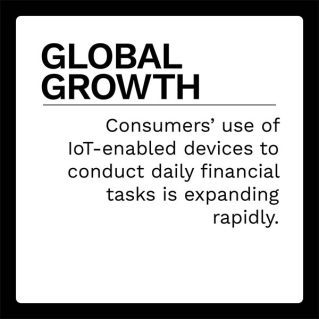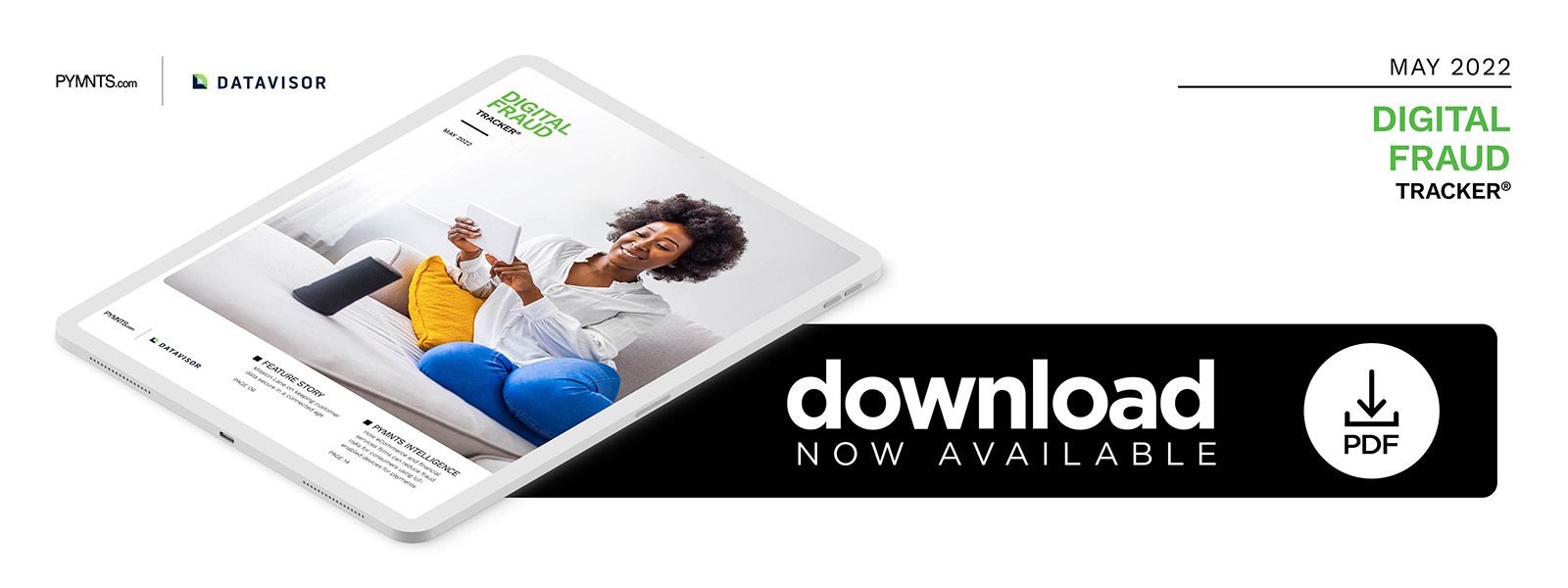How Banks Are Pulling the Plug on Financial Fraud in a Connected Age

The pandemic not only accelerated the digital transformation of banking and payments, but it also solidified consumer demand for the Internet of Things (IoT). Consumers exhibit a growing enthusiasm for technologies that can transfer money or pay bills at the touch of a button or the issuance of a voice command, and their use of IoT-enabled devices to conduct daily financial tasks is expanding rapidly.
As smartphones and IoT-enabled devices become the go-to method of doing business and making payments, however, the pressure is mounting on network providers and manufacturers to provide not only quick, seamless service, but also superior security. Providers that leverage solutions to put security at the forefront of their service offerings can build trust with the customers who have come to rely on them.
In the May edition of the “Digital Fraud Tracker®,” PYMNTS explores the proliferation of IoT-based devices and how consumers are currently using them for payments and financial services. It also examines how providers must work to gain users’ trust and ensure the security of their payments and data.
Around the Digital Fraud Space
While anyone can be the target of financial fraud, a new study from IBM found that the frequency and impact of such fraud varies greatly depending on geographical location and generational differences. American consumers fall victim to debit card fraud more than any other country studied, costing U.S. consumers an average of $265 annually due to unauthorized charges from bad actors.
Fraudulent payment scams involving gift cards are becoming more common. A recent AARP survey of more than 2,000 adults found that one in three adults over the age of 18 have been the target of scams asking them to pay a fake debt using a gift card. Interestingly, it found that most of the targeted individuals were under 50 years old, and 25% of them followed through with the purchase of a gift card, mistakenly believing they were satisfying a legitimate debt.
For more on these stories, visit the Tracker’s News and Trends section.
Mission Lane on Keeping Customer Data Secure in a Connected Age
An increasing number of consumers use connected devices to handle their day-to-day activities, such as streaming video, ordering takeout or hailing a rideshare. The risk of fraud is an ever-present concern, however, especially as more consumers use connected devices to manage their financial lives. Banks and financial institutions (FIs) looking to gain consumer trust do not get second chances when security breaches expose data from one of the most sensitive areas of their customers’ lives, so ensuring security while delivering top-notch service has become table stakes for FIs.
In this month’s Feature Story, Gaurishankar Gopalakrishnan, head of enterprise fraud, collections and recoveries at Mission Lane, discusses how FIs must use technology to maintain customer trust and reduce fraud risk as connected device use grows.
PYMNTS Intelligence: Why Security Is Key to the Future of IoT-Enabled Devices for Banking and Payments
The shift to remote transactions during the pandemic not only accelerated the adoption of digital banking, but also firmly established the market for data exchange technologies and the devices connected to them, also known as IoT. 
The global market for the IoT in the banking and financial services sector was expected to grow by nearly $8 million from 2021 to 2026, representing a CAGR of 8%. North America will account for 34% of that increase, growing at a rate of nearly 7% in 2022 alone. IoT holds promise for use in payments and account access, but work must be done to ensure that transactions and personal financial data are secure.
This month’s PYMNTS Intelligence takes a close look at how payments and financial services are becoming more common on IoT-enabled devices, as well as consumers’ perceptions and feelings about using these devices for payments and account access. In addition, it examines how providers are responding to these developments, both to mitigate potential fraud and to make consumers feel secure when using IoT-enabled devices for payments and account access.
About the Tracker
The “Digital Fraud Tracker®,” a PYMNTS and DataVisor collaboration, examines the proliferation of IoT-based devices and how consumers are currently using them for payments and financial services. It also examines how providers must work to gain the trust of cautious users and ensure the security of their payments and data.


